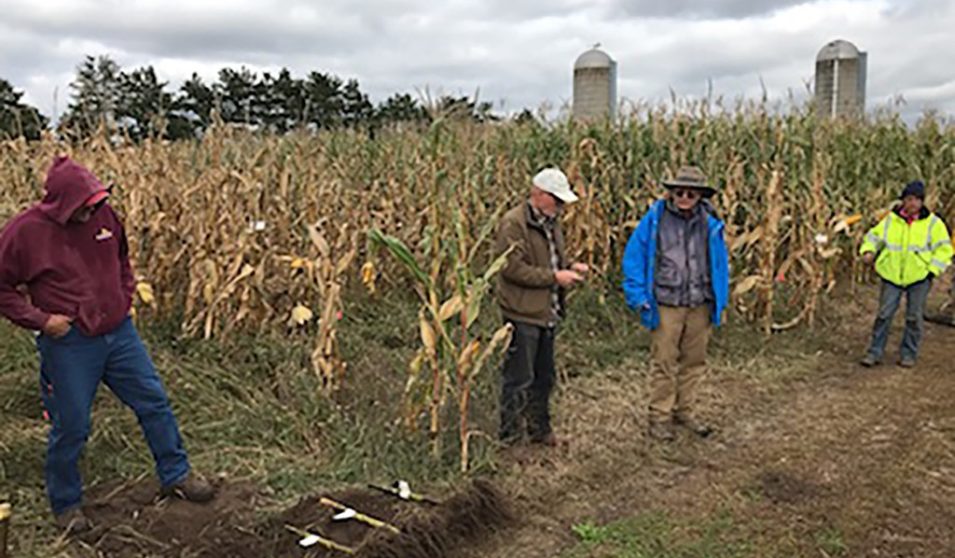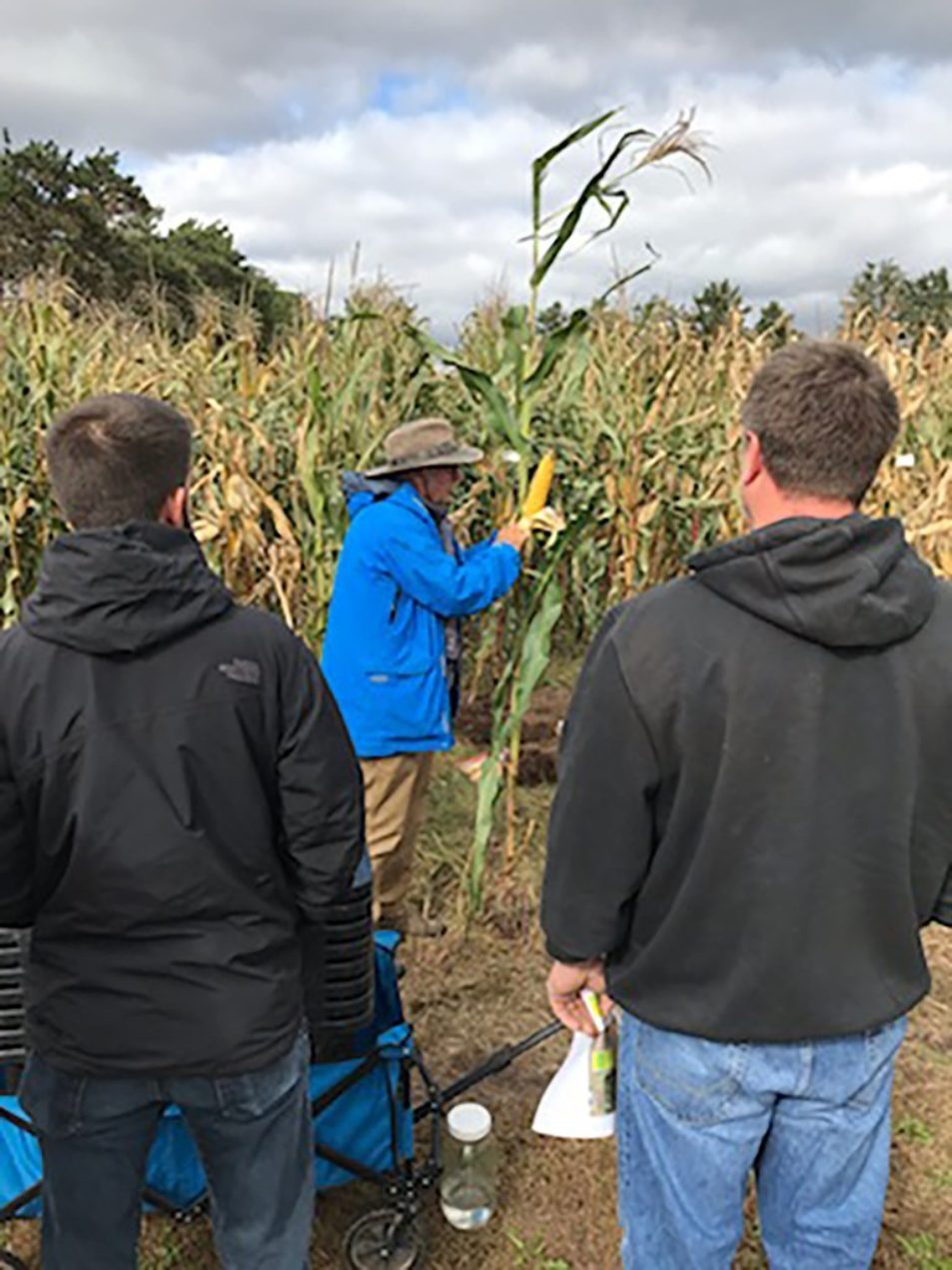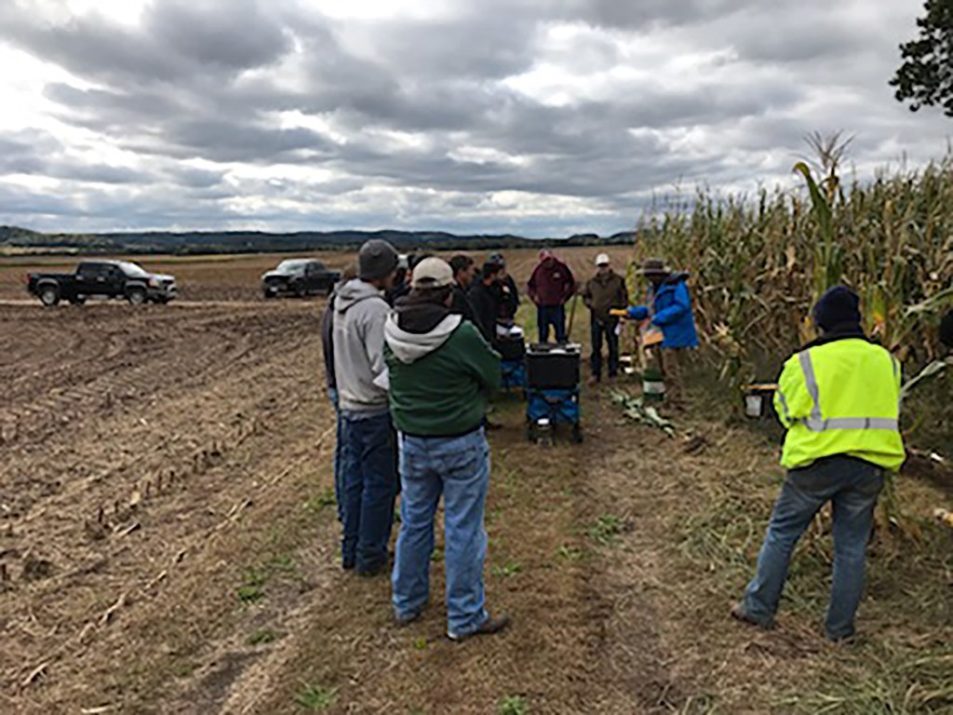It may be the Year of Clean Drinking water, but in Pepin County, it’s been a focus for decades. They have been collecting data and compiling maps, strengthening local and statewide partnerships, and working with stakeholders to identify ways to reduce the impact of nitrate leaching in a rural county that relies heavily on agriculture to support their local economy. Their carefully crafted efforts are paying off with an emergence of community leaders supporting innovative approaches to address agricultural impacts on drinking water quality.
Pepin County Land Conservation and Planning Department (LCD) has long supported community engagement around drinking water quality by offering a voluntary well sampling program for homeowners since 1983. In 2008, the county recognized the value of the well sampling data and launched a more focused effort through the UW-Stevens Point Center for Watershed Science and Education.
“We have always been dedicated to providing this great service to rural homeowners, but through a more standardized program, we are now able to use the data to learn more about groundwater quality issues throughout the county,” said Chase Cummings, Pepin County LCD Director. “Not only have we provided homeowners information about their drinking water, but this now gives us a decade of good well data to inform us on our next steps.”
Building on the county well data, the Pepin County LCD staff added available state-compiled data, such as Wisconsin Department of Natural Resources’ (DNR) public well data and well construction reports, and the Wisconsin Geological and Natural History Survey’s water table and groundwater susceptibility maps. Through these efforts, the county built a groundwater program to understand groundwater movement, identify vulnerable landscapes, and prioritize planning efforts to effectively improve drinking water quality.
Chase Cummings and the Land Conservation Department also understood that drinking water quality was not merely an environmental issue. To be effective, the program needed strong partnerships to systematically engage the public. And, as it turned out, their department was not the only one in the county struggling to figure out the next steps to improve groundwater.
Although there had been some cross-collaboration between county departments over the years, a new kind of partnership emerged between the Pepin County LCD, Zoning, Department of Public Health, and Extension. Using the ThinkWater School model, an innovative educational program offered through Extension, the partnership developed a holistic county approach to systematically tackle the “wicked problem” using systems thinking.
Through the ThinkWater School program, it became clear that the next step was to further engage the diverse stakeholders by launching the Pepin County Water Advisory Group. “We understood that the partnership not only needed to share data and create a uniformed county message, but also build a broader advisory group to help us develop shared solutions to provide better quality drinking water to rural homeowners,” said Cummings.
The data and mapping identified problematic areas in the county where water quality was poor or wells were more susceptible to contamination. Wells within the Bear Creek-Chippewa River Watershed were of particular concern, as sampling results showed the Townships of Durand and Lima with 33 percent and 45 percent of tested wells exceeding the federal safe drinking water limit of 10mg/l.
In a watershed dominated by dairy and cash grain, identifying solutions to address nitrogen loss from both commercial fertilizer and manure, while being sympathetic to the risks and challenges major shifts in management pose to farm families, proved to be quite a challenge for the advisory group. Despite this, consensus quickly emerged over the need to improve drinking water.
The farmers in the group began participating in Discovery Farms Nitrogen Use Efficiency program, designed to highlight field-scale tweaks to customize nitrogen application rates. Although small tweaks could make a big difference, it was clear that the group needed to add something innovative to overcome groundwater challenges at a faster pace.
“An advisory group member read about a corn hybrid that did not require the fertilizer rates conventional corn needs,” recalled Cummings. “Mike Travis, our Extension agent, took the lead by inviting Walter Goldstein, founder of the Mandaamin Institute, to travel from Walworth County and meet with the group and teach us about the nitrogen-efficient/fixing hybrid corn they were working on”.
The hybrid corn the Mandaamin Institute have grown uses ancient corn varieties that are more efficient at utilizing and fixing nitrogen from air and soil, so less fertilizer is needed. The Pepin area farmers were impressed with the potential, with one of the farmers volunteering a field to use as the trial.
It was late into the 2018 planting season when the seed became available. The haste to get something in the ground did not offer much of a yield, but that did not deter the group. By 2019, two farms were ready to test out the corn, one using conventional production and one organic. With more time and better planning, the crop did fantastic. Although yield numbers are not available yet, the bright green, plump stalks were enough to get producers lining up. Preparation for 2020 is now underway to plant 100 acres of the corn hybrid.
The promise of nitrogen-efficient/fixing corn is exciting, but the benefits to groundwater is unknown. While Mandaamin Institute researchers are testing the crop for feed quality, Pepin County LCD and Extension are preparing monitoring plans to determine nitrogen loss rates to ensure the new crop is helping reduce impacts to groundwater. In addition to the new hope of growing nitrogen- efficient/fixing corn and lowering commercial fertilizer rates, participating area dairy farmers are looking to address nitrogen from manure by considering options for large-scale composting.
As more producers step up to participate in the community-wide efforts to protect drinking water, the farmers in the Bear Creek-Chippewa River Watershed formalized their efforts through the Department of Agriculture, Trade, and Consumer Protection (DATCP) Producer-Led Watershed Grant Program. They plan to continue to work with the county and community to identify approaches to achieve clean, safe drinking water, monitor their efforts to ensure the approaches are indeed reducing nitrogen loss, and add to Pepin County’s groundwater database to effectively improve groundwater quality through locally-led conservation.
“As we all know, these things take time and patience. This effort is in its infancy, but working with a group of producers and citizens has made for a more exciting and hopeful outcome,” noted Cummings.





